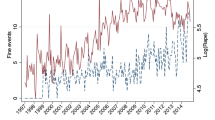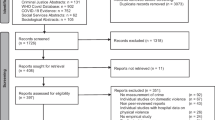Abstract
A recent change in Danish cannabis control policy has had significant implications for the structure of the retail-level cannabis market in Copenhagen. A process of restructuring following an crackdown on ‘Pusher Street’ has involved at least four people getting shot and killed in what police describe as struggles for market shares. Combating the retail cannabis market was a top three priority for the Copenhagen police. The shift in policy started in 2004 when possession for personal use was up-penalized, from a discriminatory warning to an obligatory fine of 70 euros which was quadrupled in 2007. The law was immediately followed by an extensive police crackdown on Christiania’s open retail-market. Christiania has had a cannabis market for 32 years. As cannabis use rates rose throughout the ‘90’s the market flourished. On a given day it’s estimated turnover was around 20 k, about twothirds of the total market in Copenhagen. On the 16th of May 2004 police raided ‘Pusher Street’ and arrested 60 dealers and their helpers along with 20 people accused of forming an organized lookout corps. After the initial raid police implemented a zero-tolerance zone in the area and targeted users in a deterrent effort issuing a total of 4834 fines in a year. Maintaining the zero tolerance zone has so far involved 12 big confrontations with the inhabitants of Christiania. 114 police officers have been injured and 29 formal complaints of police conduct have been lodged with the State Attorney. Following the crackdown the cannabis market adapted by dispersing and applying new methods for retail dealing.
Similar content being viewed by others
Notes
The State Attorney issued ‘cirkular letters’ that authoritatively point out how certain laws are to be upheld in daily practice: nr. 144 of 15.7.1969, 15.9.1969 and 16.8.1971 and 16.8.1971 and 30.11.1972.
Krarup ([11], p.3)
Law no. 399 of June 7. 1989. The law primarily addressed issues concerning building codes but also included provisions on illegal bars, tax evasion and payment for electricity and water.
This and other estimates of market value are highly uncertain. They are police estimates and are never published with any kind of explanation as to how they were calculated. First, it is extremely difficult to pinpoint this value (Wilkins et al 2005) and secondly the police have an inherent interest in exaggerating the figures (Brå 2007). They are used in the article because they are the only available figures and they can be compared in order to describe a trend.
Jæger et al ([6], p. 84)
Jepsen ([4], p. 4)
Storgaard [24]
Similar to the “BluntGen” subcultural norms described in MacCoun, Kilmer and Reuter ([18], p.77)
Quoted from Kleiman ([8], p.127) referring to Reuter (1983)
Københavns Politi Virksomhedsberetning ([12], p. 81)
Laursen ([16], p.40).
Refers to instatement of regular police patrolling, privatisation of the housing market, building inspections and an end to flagrant drug dealing. Kampen mod narko—handlingsplan mod narkotikamisbrug, Regeringen [21].
Law nr. 445 of February 26, 2004: Lov om ændring af lov om euforiserende stoffer og straffuldbyrdelsesloven, Skærpet indsats mod narko mv. (Stricter Effort Against Drugs).
Defined as amounts of 10 grams of hashish or less. State Attorney Announcement nr. 6, 2006.
Law nr. 201 of March 28, 2007: Lov om ændring ad lov om euforiserende stoffer, straffeloven, lov om fuldbyrdelse af straf m.v. og retsplejeloven. (Increased fines for offenses against the law on euphoria inducing substances).
Law nr. 436 of June 10. 2003: Bekæmpelse af rockerkriminalitet og anden organiseret kriminalitet. (Fighting biker gangs and other organized crime).
Full price: “includes the dollar price, time spent shopping for drugs. Risks of being robbed or otherwise victimized in this illegal markets, threats of toxic adulterants, and the possibility of being arrested and punished for drug possession.” Rasmussen and Benson ([20], p.71–2).
On January 4. 2004 the pushers actually tore down the booths themselves in an effort to avoid the police crackdown. In the following months the booths were slowly rebuild. The end result from temporarily tearing down the booths was that the police surveillance cameras were able to film a larger part of Pusher Street than before. Københavns Politi Generelrapport Christiania [13].
Cour and Hansen [14].
Københavns Politi Virksomhedsberetning ([12], p.79–81).
Danish monetary standard, approximately one-seventh of an euro.
Compared to 173 seizures, totalling 626 kilos, the year before.
Kleiman ([10], p.8).
MacCoun, Kilmer and Reuter ([18], p.76) with reference to Goldstein (1985).
Københavns Politi Virksomhedsberetning ([12], p.65).
Larsen ([15], p.12).
In 2005 76% of arrestees under 18 presented before a judge were descendents of immigrants. Københavns Politi Virksomhedsberetning ([12], p.104).
Larsen ([15], p.12).
Systemic Violence as defined by Goldstein (1985): “Violence associated with the marketing of illicit drugs, such as turf battles, contracting disputes and so on.” Quoted from MacCoun, Kilmer and Reuter ([18], p.66).
Københavns Politi Virksomhedsberetning ([12], p.65).
Møller ([19], p.18).
Rasmussen and Benson ([20], p.104).
Rasmussen and Benson ([20], p.191).
Københavns Politi Virksomhedsberetning ([12], p.98).
Københavns Politi Virksomhedsberetning ([12], p.101).
Rasmussen and Benson (2003, p.708).
Kilmer ([7], p.112).
Unpublished figures from Rigspolitiet (National police).
Scharling [22].
Scharling [22].
Hube [3].
Jyllands Posten August 24 2007.
Kleiman ([8], p.113).
References
Andersen, M. (2006). Hvad sker der på Christiania? Dansk Politi, 22.02.2006.
Det Europæiske Overvågningscenter for Narkotika og Narkotikamisbrug (EMCDDA). (2006). Årsberetning.
Hube, P. (2005). Ude i hampen. Dansk Politi, 11, 2005.
Jepsen, J. (1995). Dansk narkopolitik og dansk narkoforskning i europæisk belysning. Rapport fra NSfK’s 37 forskerseminar, Arild 18-21/5 1995, pp.183–192.
Jyllands Posten (2007). Betjente: Opgiv Christiania.
Jæger, B., Olsen, L., & Rieper, O. (1993). De offentlige myndigheder og Christiania. København: Amternes og kommunernes forskningsinstitut.
Kilmer, B. (2002). Do cannabis possession laws influence cannabis use? In I. Spruit (Ed.), Cannabis 2002 report: Technical report of the international scientific conference (pp. 119–141). Brussels: Ministry of Public Health of Belgium.
Kleiman, M. A. R. (1989). Marijuana—costs of abuse, costs of control. New York: Greenwood Press.
Kleiman, M. A. R. (1992). Against excess—drug policy for results. New York: Basic Books.
Kleiman, M A. R. (1997). The Problem of Replacement and the Logic of Drug Law Enforcement. The FAS Drug Policy Analysis Bulletin, #3.
Krarup, O. (1977). Christianiadommen. København: Informations Forlag.
Københavns Politi (2005). Virksomhedsberetning. Københavns Politi.
Københavns Politi (2004). Generelrapport Christiania. Københavns Politi.
La Cour, Eichard og Hansen, Benny Ernst (2004). Vi er ikke enige I Christiania-artikel. Dansk Politi, 17.11.2004.
Larsen, O. M. (2006). “Pusherstreet over hele byen”, Rus og afhængighed, Nr. 1. Oslo: Universitetsforlaget.
Laursen, L. (1996). Scandinavia’s tug of war on drugs. In P. Hakkarainen, L. Laursen, & C. Tigerstedt (Eds.), Discussing drugs and control policy—comparative studies on four nordic countries. Helsinki: NAD Publication 31.
MacCoun, R., & Reuter, P. (1997). Interpreting Dutch Cannabis Policy—Reasoning by analogy in the legalization debate. Science. New Series, 278(5335), 47–52.
MacCoun R., Kilmer B., & Reuter P. (2003). Research on drugs-crime linkages: The next generation. National Institute of Justice Special Report.
Møller, K. (2006). Hvad sker der med hash-markedet? Stof, 7, 14–18.
Rasmussen, D. W., & Benson, B. L. (1994). The economic anatomy of a drug war—criminal justice in the commons. London: Rowman and Littlefield Publishers, Inc.
Regeringen (2003). Kampen mod narko—handlingsplan mod narkotikamisbrug.
Scharling, N. (2004). Christiania: Modstander med medietække. Dansk Politi, 28.01.2004.
Steinberg, J. B., Lyon, D. W., & Vaiana, M. E. (Eds.). (1992). Urban America—Policy Choices for Los Angeles and the Nation. Santa Monica: RAND.
Storgaard, L. L. (1996). Scandinavia’s tug of war on drugs. In P. Hakkarainen, L. Laursen, & C. Tigerstedt (Eds.),Discussing drugs and control policy—comparative studies on four nordic countries (pp. 33–63). Helsinki: NAD Publication No. 31.
Winsløw, J. H. (1985). Kriminaliseringens sociale konsekvenser. Narkotika og kontrolpolitik, Seminar arrangeret af Nordisk Råd i samarbejde med Nordisk Samarbejdsråd for Kriminologi, Rønne, 22.–24.april 1985, Minab/Gotab, Stockholm, p.83.
Author information
Authors and Affiliations
Corresponding author
Rights and permissions
About this article
Cite this article
Moeller, K.K. Police crackdown on Christiania in Copenhagen. Crime Law Soc Change 52, 337–345 (2009). https://doi.org/10.1007/s10611-008-9185-6
Received:
Accepted:
Published:
Issue Date:
DOI: https://doi.org/10.1007/s10611-008-9185-6




